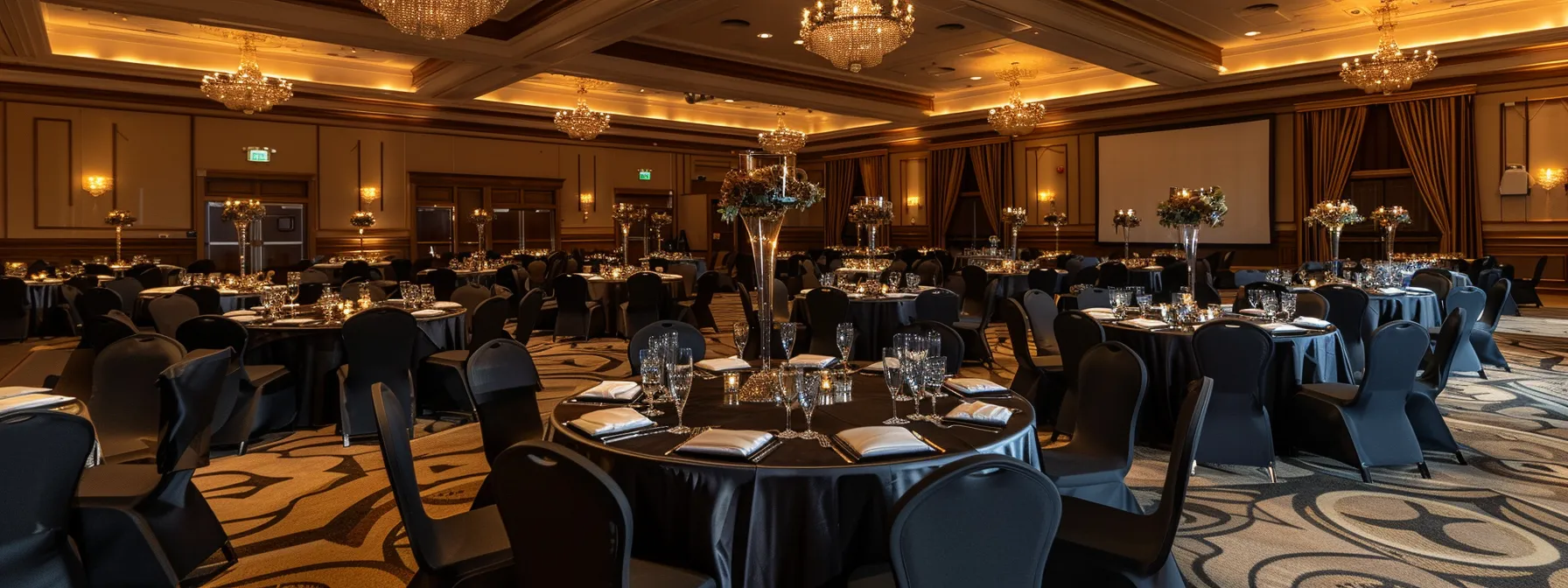BLOG
Understanding Ennui Cinema: A Genre That Captures the Art of Listlessness

When film reflects life, it often magnifies themes that resonate deeply within us. One of cinema’s most evocative and understated genres is ennui cinema—a style uniquely characterized by its exploration of monotony, dissatisfaction, and the quiet existential angst of its characters. But what exactly makes a film fall into this genre? How does it capture the essence of “listlessness” in a way that transcends mere boredom and becomes art?
This blog digs deep into the world of ennui cinema, revealing why it’s hailed as a masterclass in subtle storytelling and emotional depth. Prepare to explore a genre that speaks to universal emotions while challenging traditional cinematic norms.
What Is Ennui Cinema?
Defining the mood behind the lens
At its core, ennui cinema embodies a sense of listlessness and restlessness that mirrors existential themes. The word “ennui” itself derives from French, meaning a deep, often weary dissatisfaction with life, and this sentiment is woven seamlessly into these films.
The aesthetic could easily be mistaken for slow pacing or bleakness, but ennui cinema distinguishes itself with precise storytelling. It revels in moments of stillness, favoring introspection over action, often allowing the audience to interpret ambiguous motivations or subdued emotions. Rather than providing a neatly tied-up resolution, it instead reflects the uncertainties and complexities of the human condition.
Key Characteristics
Films within this genre share several defining features, including:
- Protagonists in search of meaning: Characters often grapple with unanswered longings or existential dilemmas.
- Meditative pacing: Deliberate, lingering shots are common, allowing the audience time to immerse in the film’s atmosphere.
- Minimalist dialogue: The emphasis on subtlety often means sparse conversation, with visuals carrying much of the narrative.
- Themes of isolation: Physical or emotional distance is prevalent, adding to the sense of alienation or loneliness.
- A focus on the mundane: Ennui cinema finds beauty and emotion in everyday occurrences, revealing the profound in the ordinary.
Ennui Cinema in Action: Iconic Exemplars
To truly appreciate the genre, one must examine the films that have defined and solidified its influence over time.
1. Lost in Translation (2003)
Directed by Sofia Coppola, Lost in Translation is an emblem of ennui cinema, capturing the alienation two strangers feel while drifting in the bustling yet isolating metropolis of Tokyo. The film’s quiet moments—Bob (Bill Murray) staring out at the sprawling city skyline, or Charlotte (Scarlett Johansson) wandering through a Japanese garden—convey more than words.
Themes of emotional disconnection and cultural distance are amplified through minimalist dialogue and lingering shots. The film explores fleeting human connections—finding comfort in the transient—while leaving the resolution deliciously open-ended.
2. The Tree of Life (2011)
Terrence Malick’s philosophical film The Tree of Life ventures into the depths of childhood memories, universal suffering, and the quest for meaning. The non-linear structure and sweeping, poetic imagery embody ennui as both a personal and cosmic struggle.
From meditative shots of nature to whispered voiceovers, Malick draws viewers into the existential questions that we often push aside amidst daily life. The subdued performances, particularly by Brad Pitt and Jessica Chastain, align seamlessly with the genre’s reflective tone.
3. Chungking Express (1994)
Wong Kar-wai’s Chungking Express is dripping with ennui, yet it remains poignantly relatable. Set in bustling Hong Kong, the characters are wrapped up in their sense of longing, pacing through their lives while yearning for love and connection.
Wong’s use of vibrant colors and spontaneous, handheld cinematography contrasts sharply with the characters’ sense of inertia, embodying the complexity of city life and inner isolation simultaneously.
The Power of Cinematic Stillness
There’s a phrase often associated with ennui cinema: “the art of doing nothing.” But don’t mistake this as a critique. This so-called “nothingness” is where the profundity lies—moments where the stillness itself speaks volumes.
For viewers accustomed to fast-paced storytelling, certain scenes may feel slow or uneventful at first glance. A character staring at a ceiling fan or aimlessly walking the streets may seem trivial. But over time, the deliberate silence reveals a world of suppressed emotions, unresolved conflicts, and human vulnerability.
Directors such as Yasujirō Ozu (Tokyo Story), Andrei Tarkovsky (Stalker), and Michelangelo Antonioni (L’Avventura)—considered pioneers of ennui cinema—rely heavily on these silent spaces. They recognize that silence is not absence; it is presence.
Why Does Ennui Cinema Resonate?
Ennui cinema has a peculiarly universal appeal. It captures a malaise we’ve all felt at some point—the sense of being stuck in motion, unsure of what lies ahead. This genre resonates most with audiences who find solace in the ambiguous and who appreciate films as reflective, almost therapeutic experiences.
For those attuned to the intricacies of emotions, ennui cinema feels more personal. Watching characters wrestle with their inner torments is cathartic in itself, as these films often reassure us that it’s perfectly normal to feel lost. They don’t provide prescriptive answers; instead, they honor the complexity of our struggles.
How to Appreciate Ennui Cinema as an Art Form
If you’re new to the genre, you might not know where to begin. Here are some tips for immersing yourself in ennui cinema without frustration or withdrawal:
- Adjust your expectations: This isn’t about fast action or conventional plot structures. Open yourself to quiet reflection.
- Focus on visuals: Pay attention to colors, framing, and the details of mise-en-scène. They often tell a deeper story than the dialogue does.
- Be present in the moment: Allow yourself to soak in the stillness rather than yearning for something to happen.
- Re-watch films: Often, subsequent viewings reveal layers of meaning and nuance that were missed the first time.
Ennui Cinema in Today’s Context
With the rise of streaming platforms, the audience for slower, introspective films has grown. Platforms like Mubi and Criterion Channel specialize in providing a rich library of contemplative cinema. Directors such as Kelly Reichardt (First Cow) and Noah Baumbach (Marriage Story) continue to craft compelling stories rooted in subtlety and self-reflection.
Even amidst the chaos of modern life, ennui cinema reminds us to slow down. It pauses to examine the quieter, often overlooked moments that make up our existence.
Rediscover the Beauty of Stillness
Ennui cinema leaves us with more than we anticipate—uncertainty, emotional depth, and a satisfying discomfort. It shows us that there’s beauty in unresolved feelings, in the discomfort of longing, and in the quiet stirrings of self-discovery.
The next time you’re in the mood for a film that does more than just entertain, immerse yourself in this genre. Watch not to see, but to feel. Explore the art of listlessness through the lens of characters who, in their own flawed ways, teach us that there’s profound meaning in the mundane.
BLOG
The Kitchen Crisis Nobody Talks About (Until It’s Too Late)

Here’s a scenario that’s played out in kitchens across the country: you’re halfway through prepping dinner when your burner decides to throw a tantrum. No heat. No flame. Just silence and the growing realization that takeout’s about to become very expensive. This is where understanding quick stove repair solutions becomes less about home maintenance and more about preserving your sanity. Because when your cooking surface goes rogue, every meal becomes a logistical nightmare. The good news? Knowing when and how to get emergency gas stove repair service can transform a week-long disaster into a same-day fix.
What most people don’t realize until they’re standing in front of a cold cooktop is how appliances quietly complete your home’s functionality. Your stove isn’t just a cooking tool, it’s the anchor of your daily routine. And when that anchor breaks loose, everything else starts drifting. You know what’s truly fascinating? How avoiding common appliance mistakes prevents most repair emergencies before they start.
What Your Stove’s Actually Trying to Tell You
Appliances speak their own language, and ignoring their warnings is like ignoring your car’s check engine light while driving cross-country. Spoiler alert: it never ends well.
That clicking sound that won’t stop? Your igniter’s struggling. The burner that takes three tries to light? The gas flow’s compromised. Uneven flames that dance yellow instead of burning steady blue? You’ve got a combustion issue that’s wasting gas and potentially creating safety concerns. These aren’t quirks to laugh about over coffee, they’re distress signals.
Most people wait until complete failure before calling for help, which is roughly equivalent to waiting until your tooth falls out before visiting the dentist. Not recommended. Not smart. Definitely not economical.
The Real Cost of Waiting
Let’s talk money, because repair avoidance isn’t free. That minor ignition problem you’ve been living with for two months? It’s forcing other components to compensate, wearing them out prematurely. What could have been a straightforward service call becomes multiple repairs because everything failed like dominoes.
Think of your stove like a relay team. When one runner stumbles, others work harder to make up the difference until they’re all exhausted and crossing the finish line isn’t even on the radar anymore. This cascade effect turns affordable fixes into budget-busting replacements.
Plus, there’s the hidden cost nobody calculates: the stress tax. Every meal becomes a gamble. Will it light? Will the flame stay consistent? Should you start dinner an hour early just in case? This low-level anxiety drains more energy than people realize, turning cooking from pleasure into pressure.
When Fast Actually Matters
Not every repair needs to happen within hours, but some absolutely do. Gas leaks, obviously. Electrical sparking near combustible materials, definitely. Complete failure when you’re hosting Thanksgiving dinner for twenty, arguably life-or-death (at least socially).
The trick lies in distinguishing between “this is annoying” and “this is urgent.” Can you safely use another burner while you schedule a convenient appointment? Great, breathe easy. Does something smell off, look wrong, or feel dangerous? Stop using the appliance immediately and get help fast.
Modern service providers understand this distinction and often offer tiered response times. Need someone within hours? That’s available (though it costs more). Can wait a day or two? That’s also an option. Most importantly, reputable services won’t pressure you into emergency rates when standard scheduling works fine.
The Service Provider Reality Check
Here’s what separates great repair services from the rest: they actually explain what’s wrong in language humans speak. No jargon waterfalls designed to confuse. No mysterious charges appearing like mushrooms after rain. Just clear communication about the problem, the solution, and the cost.
Ask questions. Lots of them. What failed? Why did it fail? What prevents future failures? Any decent technician welcomes curiosity because educated clients make better decisions and maintain their equipment properly. If someone gets defensive about questions, that’s information worth noting.
Also, verify credentials. Licensing matters. Insurance matters. Training specific to your appliance brand matters tremendously. Your neighbor’s cousin who’s “good with tools” might fix your wobbly table leg beautifully but shouldn’t be anywhere near your gas lines or electrical systems.
Prevention Isn’t Glamorous But It’s Brilliant
Nobody wakes up excited about appliance maintenance. Nobody posts Instagram stories about their annual stove inspection. Yet these boring practices save thousands in unnecessary repairs and replacements.
Clean your burners regularly. Not just the parts you can see, but the ports and channels where gas flows. Remove that drip pan occasionally and check what’s hiding underneath. Wipe down control knobs before sticky residue interferes with their function. These tiny habits compound into major savings.
Temperature accuracy deserves attention too. If your dishes aren’t cooking evenly or your baking times seem inconsistent, calibration might have drifted. This isn’t something most people can fix themselves (remember, no DIY advice here), but it’s absolutely something worth having checked during routine service.
The Upgrade Question Everyone Asks
Repair or replace? The eternal homeowner dilemma, right up there with “should I paint or wallpaper?”
General rule: if repair costs exceed half the replacement cost and your appliance is past its expected lifespan, replacement makes financial sense. But if your stove’s still relatively young and the repair’s straightforward, fixing preserves your investment while avoiding the hassle of delivery, installation, and disposal.
Factor in the intangibles too. Love your current stove’s size and configuration? Replacement might mean compromising on features you’ve grown attached to. Your kitchen’s color scheme built around that specific finish? New appliances rarely match perfectly. Sometimes repair wins simply because it maintains the status quo you’ve carefully created.
Building Your Kitchen Safety Net
Smart homeowners don’t wait for emergencies to find good service providers. They research, ask neighbors for recommendations, and establish relationships before crisis strikes. Think of it like finding a good doctor or mechanic, you want that connection solidified before you’re desperate.
Many quality services offer maintenance contracts or priority scheduling for regular clients. These arrangements might seem unnecessary until that Saturday evening when something breaks and you’re the client who gets called back first. Relationships matter, especially in service industries.
Keep documentation of all repairs and services. This paper trail helps spot patterns, validates warranties, and provides valuable information for future technicians. Plus, if you ever sell your home, detailed maintenance records demonstrate responsible ownership and can actually boost property value.
The Bottom Line Nobody Mentions
Your stove deserves respect, not because it’s fancy or expensive, but because it enables the rhythms of daily life that hold everything together. Morning coffee. Weeknight dinners. Holiday feasts that become memories. When your cooking equipment fails, it disrupts more than just meals.
Knowing when to call for help, what questions to ask, and how to maintain equipment properly transforms you from reactive crisis manager to proactive homeowner. That shift changes everything. Fewer emergencies. Lower costs. More peace of mind. Better meals.
Because ultimately, that’s what functional equipment provides: the freedom to focus on living rather than constantly troubleshooting. And isn’t that worth preserving?
BLOG
Finding the Perfect Venue for Your Event in Saskatoon

Saskatoon, with its vibrant cultural tapestry and scenic backdrops, offers a plethora of venue options for any event planner. Whether it’s a corporate conference, a dream wedding, or a lively festival, finding the right venue forms the foundation of a successful event. Saskatoon is not short of options; it presents a mix of traditional halls, modern conference centers, cozy bistros, and unique outdoor spaces. Understanding what each venue type offers is key to selecting the perfect setting for your gathering. Below, we’ll explore the venue landscape of this charming Canadian city and provide insight into making the best choice for your event.
Understanding the Saskatoon Event Scene: Key Venue Types

When it comes to event planning in Saskatoon, it’s crucial to understand the diversity of venues available. The city boasts grand ballrooms that can host large, elegant gatherings, complete with catering services and state-of-the-art audiovisual equipment. For more intimate events, boutique hotels and historical sites offer a unique charm that provides guests with an unforgettable experience.
Conference centers, like the TCU Place, are equipped with facilities that ensure any corporate event or convention runs smoothly. With multiple meeting rooms, auditoriums, and exhibition spaces, such centers can accommodate a broad range of event formats and sizes. Moreover, the professional environment they offer is conducive to fostering business relationships and facilitating knowledge exchanges.
Meanwhile, art galleries and museums open their doors for sophisticated events, surrounded by inspiring works of art. These spaces often offer a refined aesthetic that can elevate any reception or gathering. Furthermore, the surrounding exhibitions can act as an icebreaker, stimulating conversations among attendees.
Exploring Unique Saskatoon Venues for Different Event Styles

Every event carries its distinctive style and requirements, and Saskatoon’s wide array of venues caters to this diversity. For example, a rustic-themed wedding might find its perfect setting at a quaint barn or farmhouse within the rural fringes of the city, providing an authentic country atmosphere. Alternatively, contemporary art spaces can lend a trendy and modern vibe to product launches or fashion shows.
Award ceremonies and gala dinners will find luxurious grandeur in some of the upscale hotels downtown, offering elegant ballrooms and fine dining experiences. On the other end of the spectrum, non-traditional venues such as refurbished warehouses and lofts deliver an industrial-chic edge for more unconventional gatherings.
Festivals and public events often necessitate expansive outdoor areas with room for stages, stalls, and interactive installations. Parks and public squares in Saskatoon serve this purpose well, often being customizable to suit the theme of the event and expected foot traffic. Moreover, these sites allow for the added advantage of celebrating under the open sky and engaging with the general public.
Leveraging Local Saskatoon Resources to Find Your Ideal Venue
When searching for the perfect venue in Saskatoon, tapping into local resources can be immensely helpful. The city offers various event planners and venue-finding services that specialize in aligning your event needs with the ideal location. These professionals possess in-depth knowledge of what each space can offer and often have connections that can lead to preferred rates and dates.
Local vendors and suppliers can also offer insights into venues that best suit different types of events. Caterers, decorators, and AV technicians have experience with the logistics of numerous spaces, making them a valuable source of information. Collaborating with these local experts can ensure your event not only supports the community but also benefits from their professional expertise.
Tips on Booking and Planning an Event in Saskatoon’s Most Sought-After Spaces
To ensure a successful event in Saskatoon, meticulous planning and booking are paramount. Advanced booking is particularly important for sought-after venues, sometimes requiring reservations months ahead of the scheduled date. Having a flexible range of dates can increase your options and may also assist in negotiating better rates.
Planning should also take into account any seasonally affected factors, such as weather or popular tourist periods, which could impact availability and pricing. Additionally, coordinating with the venue to understand their policies and any restrictions can help mitigate unforeseen issues and facilitate a smooth event day.
Overall, Saskatoon offers a diverse range of venues to suit any event planner’s ambition and purpose. From the initial exploratory phase to the final execution, understanding your options, leveraging local expertise, and thorough planning are the keys to a successful event. As you embark on this exciting process, keeping these insights in mind will help ensure that your Saskatoon event is as impressive as its venue.
BLOG
How Long Do I Have To File A Workers Comp Claim In Los Angeles

Filing a workers’ comp claim in Los Angeles may seem overwhelming, but understanding the timeline is crucial. After a workplace injury, you only have 30 days to notify your employer. Quick action ensures your rights and benefits remain intact. Waiting too long can mean losing your chance to secure medical care and wage replacement. Remember, the clock starts ticking the moment the injury occurs. Seeking guidance is vital. Los Angeles Workers’ Compensation Lawyers | Hinden & Breslavsky can help you navigate this process. Their experience across numerous cases offers you a clear path to follow. Knowing the deadline isn’t just about legal compliance. It’s about securing your well-being and future. Don’t let confusion or delay impact your recovery journey. By understanding these timelines, you take control and ensure you’re on the right path. For more specific advice, consulting with experts is always a wise choice.
Steps to Take After a Workplace Injury
When you suffer from a workplace injury, there are immediate steps to follow. First, report the injury to your supervisor. This must happen within 30 days. Delaying this notification can complicate your claim. Second, seek medical attention. Your health comes first, and timely treatment is key. Ensure that you inform your healthcare provider that your injury is work-related. This details your situation correctly and supports your claim.
Understanding the Claims Process
The claims process involves several stages. After notifying your employer, they must provide you with a claim form within one day. Fill out this form accurately and return it to your employer. This step begins the formal claims process. Employers should forward your claim to their insurance company within one working day. The insurer then reviews your claim and decides on its validity.
Importance of Timely Filing
Filing your claim on time increases the likelihood of receiving benefits. Benefits include medical treatment and wage replacement. Delays can result in a denial of these critical benefits. Remember, the 30-day notification period is just the start. The formal claim filing should happen as soon as possible to avoid complications.
Comparison of Filing Deadlines
| Step | Deadline |
| Report Injury to Employer | 30 Days |
| Receive Claim Form from Employer | 1 Day |
| Return Completed Claim Form | As Soon As Possible |
| Employer Submits Claim to Insurer | 1 Day |
Potential Challenges
Challenges can arise during the claims process. These may include disputes over the injury’s work-related nature or delays in receiving benefits. If you face any of these issues, seeking guidance is essential. Professionals can offer clarity and support in resolving disputes effectively.
Protecting Your Rights
Protecting your rights involves staying informed. The California Department of Industrial Relations provides resources and guidelines. Visiting their website can equip you with necessary knowledge. Knowing what to expect helps in managing your case competently.
What to Do If Your Claim Is Denied
If your claim is denied, you have the right to appeal. Understanding the reasons for denial is the first step. Common reasons include missed deadlines or incomplete information. Address these issues promptly. Filing an appeal involves submitting necessary documentation within the specified time frame. Support is available through legal counsel familiar with workers’ compensation cases.
Conclusion
Filing a workers’ comp claim in Los Angeles requires understanding and quick action. By knowing your deadlines and responsibilities, you safeguard your rights and benefits. Keep in mind that help is available. Legal experts and government resources provide essential guidance. Ensuring you follow each step accurately increases your claim’s success rate. By focusing on these critical timelines, you take control of your recovery and future.
-

 BLOG1 year ago
BLOG1 year agoATFBooru: A Hub for Animated Art and Community
-

 CONSTRUCTION1 year ago
CONSTRUCTION1 year agoBuilding a Home Gym in Your Basement (7 Key Renovation Tips)
-

 BLOG1 year ago
BLOG1 year agoFictionmania: A Deep Dive into the World of Transformative Stories
-

 GAMES1 year ago
GAMES1 year agoSnow Rider 3D: Unblocked Tips and Tricks for Gamers
-

 BLOG12 months ago
BLOG12 months agoGIFHQ: A Comprehensive Guide
-

 BLOG1 year ago
BLOG1 year agoVincent herbert new wife: A Detailed Overview
-

 BUSINESS1 year ago
BUSINESS1 year agoInvestiit.com Tips: A Comprehensive Guide for Smart Investing
-

 LIFESTYLE12 months ago
LIFESTYLE12 months agoAchieve Elegance with Chic Blue Formal Dresses and Redken Professional Hair Care for All Hair Types
